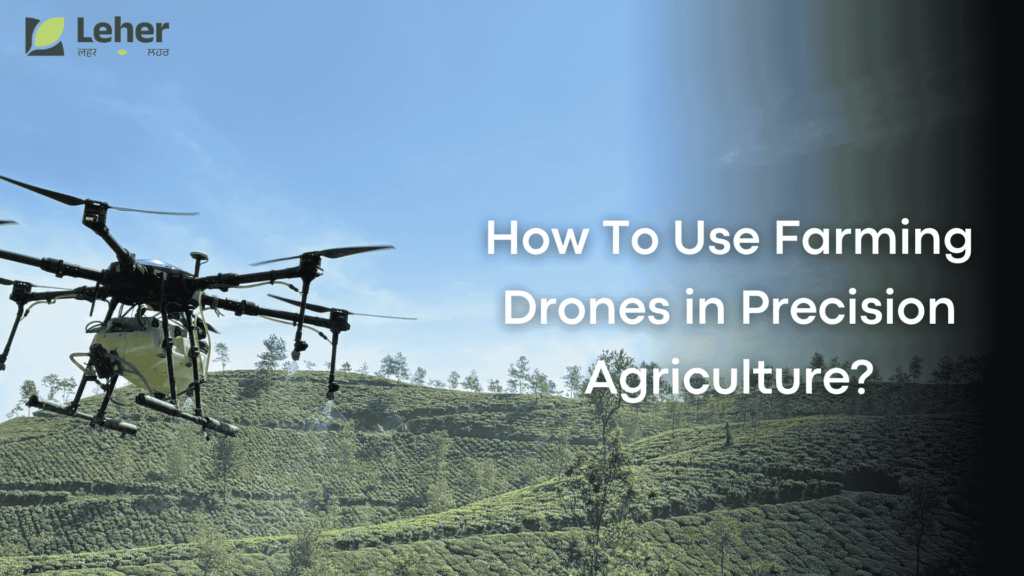Introduction:
Technological development has transformed the agricultural sector so far, making it efficient and productive. Unlike advanced tools and machinery, farmers nowadays use drones on farms and agricultural lands. Apart from Spraying Drones, they are widely used as a way to monitor crops, which eventually enhances productivity. Here is a detailed article that details the ways these unmanned aerial vehicles (UAVs and drones) are used.
The Smarter Ways To Use Agricultural Drones In Precision Of Farms And Yields:
The array of ways to use drones in farms and agricultural lands are as following;
- Helps In Crop Monitoring: Technologically, drones do have high-resolution cameras and sensors; therefore, they have detailed capturing. The multispectral sensors help farmers get an updated image of the field, including crop health issues, nutrient deficiencies, and pest infestation signs. It even helps them in analysing the data, which works beneficially in taking actions for better & improved yield.
- Soil and Field Analysis: Earlier, keeping an eye on crop health and soil condition was done manually. But today, Agricultural Drones help in knowing it with field analysis and soil conditions with the use of infrared sensors and thermal imaging features. It helps to know the best planting area over the wholesome land for crops or the need for the use of fertilizer to retain better soil conditions for greater crop growth.
- Perfect and Precision Spraying: Today, the popularity of spraying drones has increased in the Indian agricultural sector. They are widely used for the controlled application of pesticides and fertilizers on agricultural farms. This reduces the manual labouring task and delivers chemicals or pesticides with high precision. Spraying with drones reduces waste and minimizes the harmful impact on the environment. Which is directly or indirectly linked with cost-saving solutions for farmers.
- Irrigation Management: Drones are advanced in features and equipped with thermal cameras that identify farming areas with drought stress. It provides imaging of pinpointing dry patches in agricultural lands that help farmers adjust their irrigation systems. It helps them improve their efficiency for proper water usage and prevents overwatering as well.
- Promote Seeding and Planting: Investing in an advanced drone provides a feature for planting seeds among the vast areas of agricultural land. This eventually saves time and labour costs. Moreover, it is capable of uniform seed and nutrient distribution that benefits optimal growth & yield.
- Livestock Monitoring: Apart from crop management, using drones helps in monitoring livestock farming. It helps track the movement of animals that may harm crops and detect potential issues on farms. Using drones ensures keeping an eye on fields with risks of injuries and reduces the need for manual supervision. Farmers also engaged in animal husbandry help in detecting and monitoring grazing patterns.
- Improved Forecasting: The data collected through monitoring or tracking of fields helps in better analysing the growing season. It helps farmers to get real-time predictions on crops. This promotes an understanding of plans for marketing crops and storage management and enhances farmer’s productivity.
- Lowers the Impact of Environment: The usability of drones in agricultural lands helps minimize the use or wastage of chemicals (fertilizers and pesticides). It even reduces the harmful impact on soil and reduces land compaction from heavy machinery. Drones also help in knowing land conditions with the need for water, so they are quite a resourced solution to conserve water. All these measures are sustainable practices that contribute to saving the environment.
The Final Verdict:
Time to sum up here with a bottling line that, apart from Spraying Drones, widely contributes to precision over agricultural lands and farms. They are making farming practices advanced and easy. Integrating drone technology into agricultural and farming activities improves work efficiency, reduces the cost of labour and increases crop yield. Thus, a good solution for sustainable farming methods is making agricultural practices smarter and more productive.


